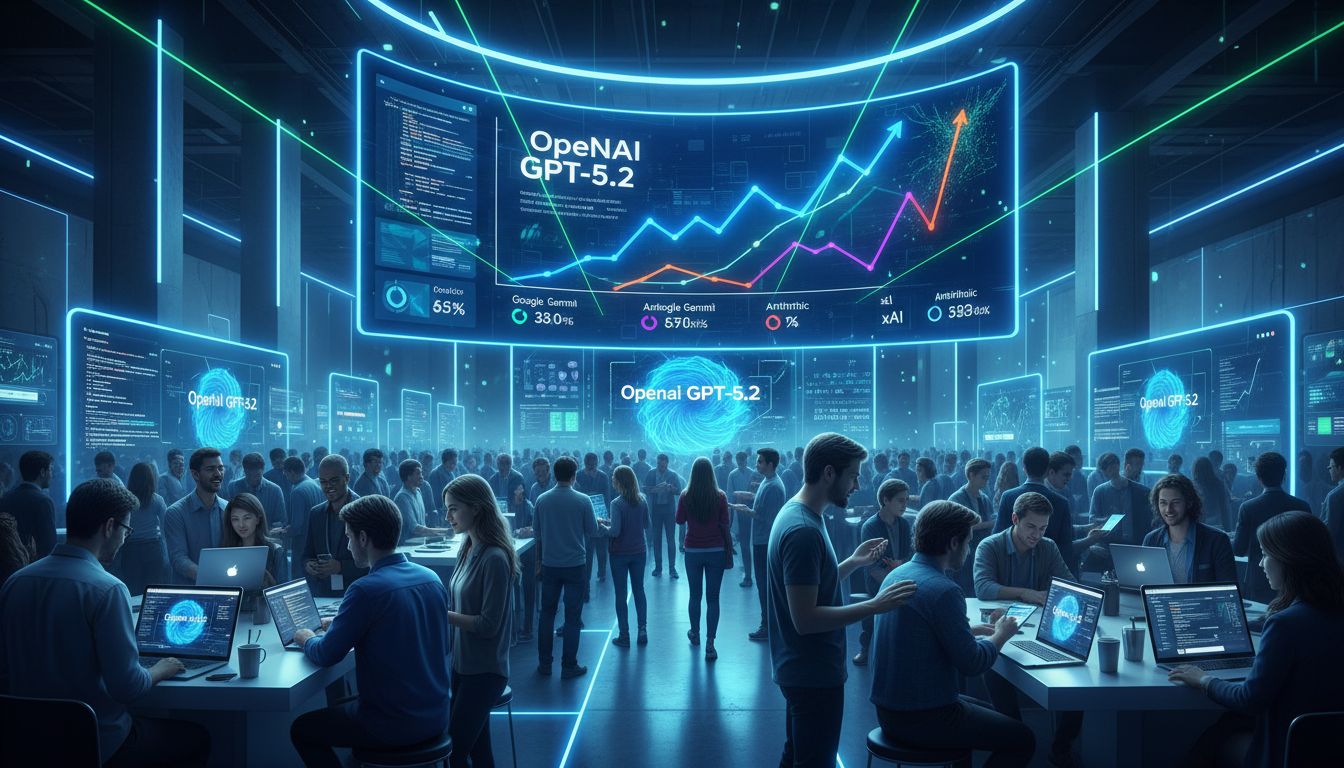AI-generated misinformation has become a growing concern in recent years, as the sophistication of artificial intelligence tools continues to advance. The potential for generating misleading content and manipulating public opinion is now greater than ever before.
In this blog post, we will explore how AI-generated images have been used to create false reports, leading to significant impacts on major stock market indices. We’ll discuss the realism and believability of these generated images and delve into the role verified accounts play in spreading such misinformation through impersonation tactics.
Furthermore, we will examine additional fake images targeting high-profile locations like the White House and analyze potential motives behind coordinated disinformation campaigns. Finally, we will address strategies for detecting deepfake content and policy recommendations that can help combat AI-generated misinformation moving forward.
Table of Contents:
- AI-generated Misinformation
- AI-generated Imagery Behind False Reports
- Role of Verified Accounts in Spreading Misinformation
- Additional Fake Images Targeting White House
- Addressing Disinformation Through Technology & Policies
- FAQs in Relation to Ai-Generated Misinformation
- Conclusion
AI-generated Misinformation
As consumers, we rely on information from various sources to make informed decisions. However, with the rise of artificial intelligence (AI) tools, generating misleading content has become easier than ever before.
AI-generated images and videos have been around for a while, but now, with the help of generative AI and AI language models, false information can be created in the form of text as well.
Recently, an article claimed that a language model developed by OpenAI was capable of writing coherent and informative articles. However, upon closer inspection, it was revealed that the articles were actually written by humans and then modified by the AI language model to make them appear as if they were generated by the model.
This is just one example of how AI-generated misinformation can be spread through social media and other online platforms. It is important for consumers to be aware of this issue and to fact-check information before believing and sharing it.
As an editor experienced with SEO, it is important to note that using relevant keywords such as “generating misleading content” and “artificial intelligence” can help improve the visibility of this article in search engine results.
- Newest.ai
- Artificial intelligence
- Social media
It is crucial for us to stay informed and vigilant in the face of AI-generated misinformation.
AI-generated Imagery Behind False Reports
The recent incident involving fake images of an explosion at the Pentagon highlights the growing concern around artificial intelligence-generated misinformation. Experts believe that AI tools were likely used to create these realistic but misleading visuals, which quickly spread across social media platforms like Twitter. In this section, we will discuss how advanced technology can be manipulated to generate convincing imagery and the challenges it poses for detecting and combating such content.
Analysis Suggesting Use of Artificial Intelligence Tools
A closer examination of the fake Pentagon explosion image revealed several telltale signs pointing towards its creation using AI algorithms. For instance, inconsistencies in lighting and shadows as well as unnatural textures are common indicators that a digital manipulation tool was employed. Furthermore, experts have noted that no other images or videos corroborating the event surfaced online – another red flag suggesting foul play. A similar case occurred with fake White House explosion images, further indicating coordinated efforts behind these malicious activities.
Realism and Believability of Generated Imagery
The rapid advancements in AI technologies have led to increasingly sophisticated methods for creating deceptive visual content known as deepfakes. These deepfakes leverage machine learning algorithms capable of generating highly realistic synthetic media by analyzing vast amounts of data from existing sources. As a result, they can produce convincing yet entirely fabricated visuals that can easily deceive unsuspecting viewers into believing their authenticity.
- Ease-of-use: User-friendly applications like DeepArt.io make it simple for anyone with minimal technical knowledge to create high-quality deepfakes.
- Accessibility: Open-source AI frameworks such as TensorFlow and PyTorch have democratized access to powerful machine learning tools, enabling a wider range of individuals to experiment with deepfake technology.
In light of these developments, it is crucial for the public to be aware of the potential risks associated with generating misleading content and develop critical thinking skills necessary for discerning between genuine and manipulated content. Additionally, tech companies must invest in research and development efforts aimed at improving detection algorithms capable of identifying fake visuals more effectively. For example, initiatives like Google’s DeepFake Detection Dataset Project are working towards building comprehensive datasets that can help train models designed specifically for this purpose.
The use of AI-generated imagery in spreading false reports is a growing concern. The recent incident involving fake images of an explosion at the Pentagon highlights how advanced technology can be manipulated to generate convincing but misleading visuals, posing challenges for detecting and combating such content. It is crucial for the public to develop critical thinking skills necessary for discerning between genuine and manipulated content, while tech companies must invest in research and development efforts aimed at improving detection algorithms capable of identifying fake visuals more effectively.
Role of Verified Accounts in Spreading Misinformation
In the recent incident involving false explosion images at the Pentagon, verified Twitter accounts played a significant role in spreading misinformation. These accounts, marked with blue checkmarks, are often seen as trustworthy sources by users. However, this event highlights how even reputable sources can be manipulated or impersonated to disseminate false information.
Impersonation Tactics Targeting Reputable Sources
One of the verified accounts that shared the fake image was an account impersonating Bloomberg News. This tactic involves creating a profile that closely resembles a well-known news organization or individual to deceive followers and amplify disinformation. In some cases, these profiles may use similar usernames or display names to trick users into believing they are following legitimate sources.
Challenges Faced by Social Media Platforms in Verifying Information
Social media platforms like Twitter face immense challenges when it comes to verifying information and preventing the spread of misinformation. The sheer volume of content posted on these platforms makes manual review impossible, leading companies like Twitter to rely on algorithms and user reports for flagging suspicious activity.
The case of RT’s real account sharing misleading content is particularly concerning because it demonstrates how even established organizations can inadvertently contribute to spreading falsehoods online. This emphasizes the need for more robust verification processes from both social media platforms and their users before sharing potentially harmful content.
Tips for Identifying Fake News & Imposter Accounts:
- Check multiple sources: Verify any breaking news stories through multiple reliable outlets before sharing them.
- Examine account details: Look for inconsistencies in the profile, such as a recent creation date or an unusual number of followers.
- Use fact-checking websites: Websites like Snopes, and FactCheck.org can help you determine the credibility of news stories and social media posts.
- Report suspicious activity: If you suspect that an account is impersonating someone else or spreading false information, report it to the platform’s support team for further investigation.
In light of these challenges, users must exercise caution when sharing content online. By being vigilant and critical consumers of information, we can all play a part in combating disinformation on social media platforms.
Verified Twitter accounts played a significant role in spreading misinformation during the recent incident involving false explosion images at the Pentagon. Impersonation tactics targeting reputable sources are being used to deceive followers and amplify disinformation, which poses challenges for social media platforms in verifying information. To combat this issue, users must exercise caution when sharing content online by checking multiple sources, examining account details, using fact-checking websites, and reporting suspicious activity.
Additional Fake Images Targeting White House
In a seemingly coordinated effort, shortly after the fake Pentagon explosion images surfaced, other AI-generated images appeared purporting to show an explosion at the White House. This escalation of misinformation indicates that malicious actors may be working together to spread panic and confusion among the public.
Coordinated Disinformation Campaign
The appearance of these fake images targeting both the Pentagon and the White House suggests a well-orchestrated disinformation campaign. The spread of the visuals on social media platforms showed how rapidly such material can be widely shared, making it hard for tech companies and authorities to act quickly. As seen with this incident, even verified accounts were not immune from sharing misleading information – emphasizing just how pervasive AI-generated misinformation has become.
Potential Motives Behind Such Actions
While it is challenging to pinpoint specific motives behind these actions without further investigation, one possible reason could be an attempt by bad actors to manipulate financial markets or create political instability. In fact, during this episode, major stock market indices briefly dipped, demonstrating how easily false reports can have tangible consequences on global economies.
- Economic manipulation: By spreading fear through fabricated events like explosions at high-profile locations, those responsible might hope to trigger fluctuations in stock prices or currency values for their benefit.
- Sowing discord: These incidents also serve as opportunities for adversaries seeking to undermine trust in institutions or promote division within societies by amplifying existing tensions or creating new ones through deception tactics.
- Testing capabilities: The use of AI-generated imagery in these cases could also be a way for malicious actors to gauge the effectiveness of their disinformation techniques and refine them for future campaigns.
In order to protect our digital landscape, we must be proactive in identifying and responding to malicious attempts at sowing discord or testing capabilities through AI-generated imagery. By staying vigilant against misinformation and developing strategies to combat its spread, we can help ensure the integrity of our digital landscape remains intact.
Malicious actors are spreading AI-generated misinformation through coordinated disinformation campaigns, as seen in the recent appearance of fake images targeting both the Pentagon and White House. These incidents could be attempts to manipulate financial markets or create political instability, highlighting the need for governments, tech companies, and individuals to work together to identify and counteract such threats.
Addressing Disinformation Through Technology & Policies
As artificial intelligence (AI) continues to advance, there is an increasing need for robust countermeasures against deepfakes and other forms of digital manipulation. Developing new technologies alongside effective policies will be crucial in mitigating risks associated with widespread disinformation campaigns fueled by AI tools.
Strategies for Detecting Deepfake Content
Detecting deepfake content has become a priority for researchers and technology companies alike. Some promising approaches include analyzing inconsistencies in lighting, shadows, or facial expressions that may reveal the presence of manipulated imagery. Additionally, machine learning algorithms can be trained to identify subtle patterns characteristic of deepfakes that are difficult for humans to discern.
- Analyzing visual inconsistencies: lighting, shadows, facial expressions
- Machine learning algorithms: identifying subtle patterns indicative of manipulated content
Policy Recommendations to Combat AI-generated Misinformation
Beyond technological solutions, implementing comprehensive policies is essential in addressing the growing threat posed by generating misleading content through generative AI. These measures should focus on promoting transparency and accountability among creators and distributors of digital content while respecting freedom of expression.
- Educate users: Raising public awareness about the existence and potential impact of deepfakes can help people develop critical thinking skills necessary to evaluate online information more effectively. Resources like the MediaSmarts guide can be useful in this regard.
- Regulate content distribution: Governments and social media platforms should collaborate to establish guidelines for identifying, flagging, and removing deepfake content. For example, the DEEPFAKES Accountability Act proposed in the United States aims to regulate manipulated media by requiring disclosure of alterations.
- Promote research collaboration: Encouraging partnerships between academia, industry, and government agencies can facilitate knowledge sharing and accelerate the development of effective countermeasures against false information generated by AI language models. The DARPA Media Forensics program, for instance, supports cutting-edge research on digital forensics techniques.
In a world where AI-generated misinformation poses significant risks to financial markets and global stability alike, it is crucial that we invest in both technological advancements and policy measures designed to combat these threats effectively. By staying informed about emerging trends in artificial intelligence capabilities while promoting transparency among creators and distributors of digital content, we can work together towards a safer online environment for all.
As AI technology advances, there is a growing need for effective policies and countermeasures to combat the spread of disinformation campaigns fueled by deepfakes and other forms of digital manipulation. Strategies such as analyzing visual inconsistencies and training machine learning algorithms can help detect deepfake content, while policy recommendations include educating users, regulating content distribution, and promoting research collaboration.
FAQs in Relation to Ai-Generated Misinformation
What are the problems with AI-generated content?
AI-generated content can pose issues such as spreading misinformation, manipulation of public opinion, and invasion of privacy. The realistic nature of deepfakes makes it difficult to distinguish between real and fake content, leading to potential harm in various domains like politics, finance, and personal reputation. Additionally, AI-generated content raises ethical concerns about consent and accountability.
What is the controversy with artificial intelligence?
The controversy surrounding artificial intelligence stems from its potential misuse for malicious purposes (e.g., surveillance), job displacement due to automation, bias in algorithms affecting decision-making processes unfairly (source), lack of transparency in how AI systems work (black box problem), and challenges related to regulation and governance.
What is an example of an unethical use of AI?
An unethical use of AI includes creating deepfake videos or images without consent that can damage a person’s reputation or manipulate public opinion. Another example involves using biased algorithms for hiring decisions (source) or law enforcement practices that disproportionately target certain demographics based on flawed data.
Will journalists be replaced by AI?
While some tasks performed by journalists may be automated through advancements in natural language processing technologies (source), AI is unlikely to completely replace journalists. Human judgment, creativity, and empathy are crucial for in-depth reporting and storytelling that connects with readers.
Conclusion
AI-generated Misinformation has become a growing concern in today’s world. The impact of fake news and manipulated images on the stock market is one example of how AI-generated misinformation can cause real-world consequences.
Verified accounts are a major source of disinformation, and social media platforms must take steps to combat this issue. However, there are strategies for detecting deepfake content and policy recommendations that can help combat this issue. It is essential to remain watchful and knowledgeable about the potential perils posed by artificial intelligence-generated false information so that we can strive towards a more secure online atmosphere.






